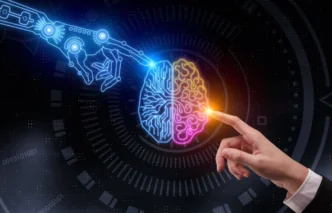Predicting the future of artificial intelligence (AI) is no small feat, given how quickly the industry evolves. Despite the challenges, we’ve successfully identified key trends over the past few years. Our predictions for 2024, such as the rise of generative video, more advanced robotics, and the surge of agents powered by multimodal language models, proved accurate. As we look ahead to 2025, let’s dive into five emerging trends that are set to shape the AI landscape.
A Quick Recap of 2024’s Trends
Hits:
- Customized Chatbots: What we called “interactive helper apps” powered by multimodal large language models turned into agents—the hottest trend in AI.
- Generative Video: OpenAI’s Sora and Google DeepMind’s Veo demonstrated rapid advancements in video generation technologies.
- Advanced Robotics: Large language models continued to influence robotics, enabling machines to handle more complex tasks.
Miss:
AI-generated election disinformation, thankfully, was less prevalent than anticipated. While 2024 had its share of controversies, political deepfakes were not a significant concern.
2025 AI Trends to Watch
1. Generative Virtual Playgrounds
If generative images dominated 2023 and generative video ruled 2024, 2025 will be the year of generative virtual worlds. These immersive technologies are poised to revolutionize gaming and robotics training.
Key Developments:
- Google DeepMind’s Genie 2: In December 2024, DeepMind unveiled a model capable of transforming a static image into a fully interactive virtual environment.
- Innovative Startups: Companies like Decart and Etched showcased dynamic game generation, while World Labs introduced “large world models” (LWMs).
Applications:
- Gaming: Real-time generation of playable environments from sketches could lead to groundbreaking game designs.
- Robotics Training: Virtual worlds allow robots to learn by trial and error in simulated environments, accelerating the development of spatial intelligence.
| Feature | Application | Example Technology |
|---|---|---|
| Real-time environment generation | Game design | Genie 2 |
| Virtual worlds for training | Robotics and AI development | LWMs by World Labs |
2. Large Language Models That “Reason”
The evolution of large language models (LLMs) in 2025 will focus on reasoning—the ability to solve problems step by step.
Breakthroughs:
- OpenAI’s o3 Model: Released in November 2024, o3 introduces structured problem-solving, making LLMs more accurate for math, physics, and logic.
- Google DeepMind’s Mariner Agent: An experimental web-browsing AI that navigates complex tasks by breaking them into manageable steps. For instance, Mariner resolved a recipe query by backtracking to clarify missing details.
Implications:
- Enhanced capabilities for AI agents across industries, from cooking to coding.
- Increased accuracy and reliability in LLM outputs, enabling better support for users.
| Model | Key Feature | Use Case |
| OpenAI o3 | Step-by-step reasoning | Math, physics, logic |
| DeepMind’s Mariner | Task decomposition | Web browsing assistance |
3. AI’s Impact on Science
AI is accelerating breakthroughs in scientific research, earning recognition at the highest levels. In October 2024, the Nobel Prize in Chemistry was awarded for innovations driven by AI.
Achievements:
- AlphaFold’s Protein Folding: A revolutionary tool by Google DeepMind that predicts protein structures with remarkable accuracy.
- Meta and Hugging Face’s Contributions: Large datasets and models, such as LeMaterial, streamline materials science research.
Future Prospects:
- Discovery of new materials and drugs will benefit from AI’s ability to analyze vast datasets.
- OpenAI’s o1 model showed promise as a “virtual scientist,” capable of assisting researchers across disciplines.
Statistic: A recent study found that AI tools reduced research timelines by up to 30% in drug discovery projects.
| AI Contribution | Field | Example |
| Protein folding | Biology | AlphaFold |
| Materials discovery | Materials science | LeMaterial by Meta |
4. AI’s Role in National Security
The intersection of AI and national security is a burgeoning area, with defense-tech companies tapping into AI for strategic advantage.
Developments:
- US Military’s Replicator Program: $1 billion investment in small drones inspired by lessons from the Ukraine conflict.
- OpenAI’s Defense Pivot: Partnered with Anduril to develop AI systems for drone countermeasures.
Ethical Concerns:
While lucrative, collaborations with defense sectors raise questions about ethical boundaries. Companies face scrutiny over aligning their values with military contracts.
Statistic: Global AI defense spending is projected to reach $18 billion by 2025, a 25% increase from 2023.
| Initiative | Focus Area | Funding |
| Replicator Program | Drone technology | $1 billion |
| OpenAI-Anduril | Drone countermeasures | Undisclosed |
5. The Rise of Nvidia’s Competitors
For years, Nvidia has dominated the AI hardware market. However, 2025 may mark the beginning of serious competition.
Challengers:
- Major Players: Companies like AMD, Broadcom, and Amazon are developing competitive chips, particularly for inference tasks.
- Startups: Groq and others are exploring innovative chip architectures to rival Nvidia’s designs.
Geopolitical Factors:
The US CHIPS Act is driving domestic semiconductor production, while Taiwan’s strategic position in the chip supply chain remains a contentious issue.
Statistic: Nvidia’s share of the AI chip market fell from 82% in 2023 to 75% in late 2024 due to emerging competitors.
| Competitor | Strength | Notable Development |
| AMD | Inference optimization | Advanced chip designs |
| Groq | New chip architectures | Risk-based innovation |
The Future of AI
The AI landscape in 2025 is set to be as dynamic and unpredictable as ever. From generative virtual worlds to reasoning models, AI’s potential continues to grow. As these technologies evolve, so do their applications, challenges, and implications for society.
For a detailed look at AI’s role in scientific research, visit DeepMind’s AlphaFold.
FAQs
1. What is the most exciting AI trend for 2025?
Generative virtual worlds hold immense potential, with applications ranging from gaming to robotics training.
2. How will reasoning models impact AI applications?
Reasoning models improve accuracy and reliability, enabling AI to handle complex tasks more effectively.
3. What industries will benefit most from AI advancements?
Key sectors include gaming, scientific research, national security, and materials science.
4. Will Nvidia retain its dominance in AI hardware?
While Nvidia remains a leader, competition from startups and major players like AMD is intensifying.
5. What are the ethical challenges of AI in national security?
AI’s use in defense raises concerns about ethical practices and the alignment of corporate values with military objectives.










